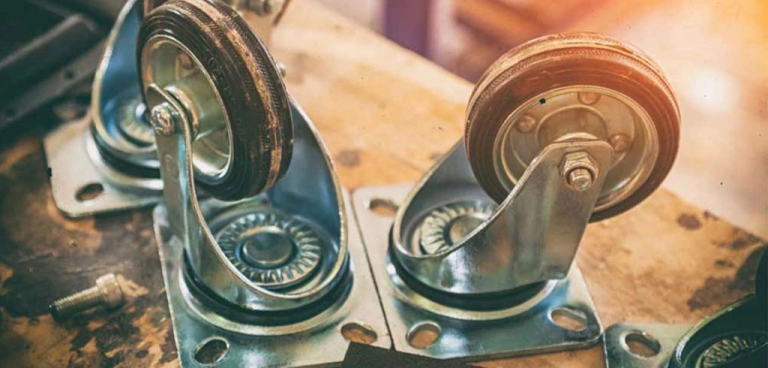Ensuring a Smooth Ride: The Significance of Routine Ball Joint Maintenance
Smooth rides and responsive handling are attributes that every vehicle owner desires. At the heart of a vehicle’s suspension system lies a critical component known as the ball joint. This small yet mighty connector plays a pivotal role in maintaining optimal control and stability. In this article, we delve into the importance of regular ball joint maintenance for a consistently smooth and safe driving experience. Additionally, we explore the connection between ball joints and other components, such as eye bolts, to provide a comprehensive understanding of how proper maintenance contributes to vehicle longevity.
Understanding the Role of Ball Joints:
A. Essential Suspension Components:
Ball joints serve as the crucial pivot points connecting the vehicle’s control arms to the steering knuckles or spindles. This connection allows for the articulation and movement required for the wheels to respond to steering input and changes in road conditions.
B. Supporting Vehicle Weight:
Ball joints bear the weight of the vehicle and absorb the forces encountered during acceleration, braking, and cornering. This weight-bearing function is vital for maintaining stability and preventing excessive wear on other suspension components.
C. Enabling Smooth Articulation:
During steering, the ball joints allow for smooth articulation, ensuring that the wheels can turn and adapt to changes in the road surface. This flexibility is essential for a comfortable and controlled driving experience.
Signs of Worn Ball Joints:
Regular maintenance is imperative to identify and address issues with ball joints before they compromise safety and performance. Recognizing the signs of worn ball joints is crucial for timely intervention:
A. Clunking or Rattling Noises:
Worn ball joints can produce clunking or rattling sounds, particularly when going over bumps or rough terrain. These noises indicate excessive play in the joint, compromising its ability to maintain a secure connection.
B. Vibration in Steering Wheel:
A vibrating or shaky steering wheel, especially during turns, can be a symptom of deteriorating ball joints. The vibration is a result of the joints failing to provide smooth articulation, affecting the overall stability of the vehicle.
C. Uneven Tire Wear:
Worn ball joints can lead to uneven tire wear, as the compromised suspension system fails to keep the tires properly aligned. This not only affects the longevity of the tires but also poses a safety risk.
D. Poor Handling and Steering Response:
If you notice a change in the vehicle’s handling, such as difficulty steering or a drifting sensation, it could indicate problems with the ball joints. Addressing these issues promptly is crucial for maintaining control and responsiveness.
The Importance of Regular Ball Joint Maintenance:
A. Preventing Premature Wear:
Routine maintenance, including regular inspections and lubrication, helps prevent premature wear of ball joints. Lubricating the joints ensures smooth movement, reducing friction and minimizing the risk of damage.
B. Avoiding Safety Hazards:
Worn ball joints pose a significant safety hazard, as they can lead to a loss of control, especially during sudden maneuvers or emergency situations. Regular maintenance is a proactive measure to ensure that ball joints are in optimal condition.
C. Preserving Alignment and Tire Health:
Well-maintained ball joints contribute to proper wheel alignment, preventing uneven tire wear. This not only extends the lifespan of the tires but also enhances fuel efficiency and overall driving comfort.
The Connection with Eye Bolts:
A. Securing Ball Joints with Eye Bolts:
Eye bolts play a role in securing and fastening ball joints within the suspension system. These bolts provide a reliable anchor, ensuring that the ball joint remains securely attached to the control arms and steering components.
B. Importance of Proper Torque and Fastening:
During maintenance or replacement of ball joints, it is crucial to adhere to proper torque specifications when securing them with eye bolts. The correct torque ensures a secure connection while preventing over-tightening, which can lead to premature wear.
DIY Ball Joint Maintenance Tips:
A. Lubrication:
Regularly lubricate ball joints to reduce friction and wear. Use a high-quality, compatible lubricant recommended by the vehicle manufacturer.
B. Visual Inspections:
Perform visual inspections of ball joints, looking for signs of wear, damage, or corrosion. Any abnormalities should be addressed promptly.
Conclusion: A Smoother Journey Ahead:
The importance of regular ball joint maintenance cannot be overstated when aiming for a smooth and safe driving experience. By understanding the role of ball joints, recognizing signs of wear, and incorporating routine maintenance practices, vehicle owners can ensure the longevity and optimal performance of their suspension systems.
As the connection between ball joints and eye bolts remains integral to the structural integrity of the suspension system, a holistic approach to maintenance is crucial. Whether you’re navigating city streets or embarking on off-road adventures, a well-maintained suspension system, supported by healthy ball joints and secure eye bolts, ensures that your journey is not only smooth but also safe and enjoyable.






